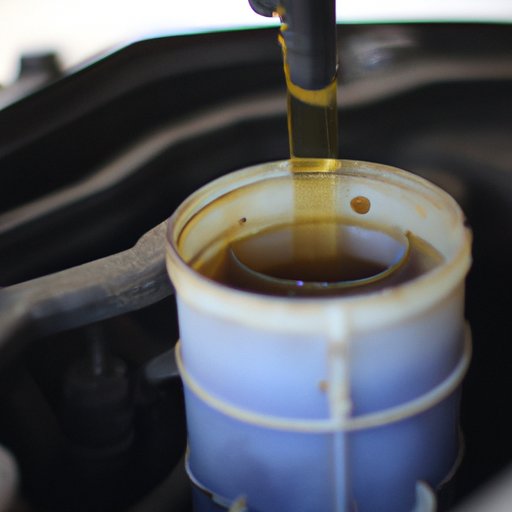Introduction
A vehicle’s transmission is one of its most important components. It translates the power generated by the engine to the wheels, enabling a smooth ride. That’s why maintaining the vehicle’s transmission should be a top priority for everyone who owns a car. Changing the vehicle’s transmission fluid is one of the most important ways to ensure that the car runs smoothly. In this article, we’ll be discussing the process of changing transmission fluid, as well as all the reasons why it’s important.
Why it’s important to change transmission fluid
The transmission fluid acts as a lubricant, ensuring that the moving parts of the vehicle’s transmission are properly lubricated. Over time, this fluid can become less effective. When this happens, it can no longer provide adequate protection to the transmission. This can lead to expensive repairs or even replacement. Neglecting to change the transmission fluid can also decrease fuel efficiency, cause unnecessary wear and tear on the vehicle, and reduce its overall lifespan.
Signs that your transmission fluid needs to be changed
There are some warning signs that your vehicle’s transmission fluid needs to be changed. These include difficulty shifting gears, low transmission fluid levels and fluid leaks, which can occur due to the old and worn-out fluid. If you notice any of these signs, it’s essential to take your vehicle for maintenance at the earliest possible opportunity. Delaying a change can lead to further damage to your automotive.
Tips for maintaining your vehicle’s health
To keep your vehicle’s transmission healthy you need to follow some simple maintenance practices. Firstly, ensure with the vehicle’s user manual on the recommended frequency for changing the transmission fluid. It is usually every 30,000-40,000 miles. Secondly, ensure you use the right type of fluid for your vehicle. Using the wrong kind could lead to damage to the transmission. Lastly, you should also ensure other vital parts of your car are in good condition, such as the engine, brakes, and tires.
A step-by-step guide for beginners
Changing the transmission fluid at home could save you some money. Before you get started, you need to gather the following equipment: a transmission funnel, a socket wrench, an oil drain pan, and a new filter kit. The steps to follow include; first ensure to park the car on a flat surface. Next, warm the car’s engine by driving it for a few minutes, allowing the fluid to flow freely. After this, secure the vehicle on jack stands. Locate the transmission pan and remove the screws ensuring the pan is at an angle to drain all old fluid. Swap the old filter over with the new filter, clean the pan, and install the pan back. Using the funnel and following. Ensure to use a dipstick to measure the amount of fluid required.
Following these steps is vital in guaranteeing that your car’s transmission system will run properly without risk of leaks or damage. You can find more detailed instructions online with pictures and videos to help guide you through the process.
Mistakes to avoid while changing transmission fluid
Changing your vehicle’s transmission fluid can seem like a challenging task, but it’s essential to avoid making common mistakes, such as; overfilling or underfilling the transmission, using the wrong type of fluid, or forgetting to flush the transmission fluid. Ensure you thoroughly understand the instructions to avoid making these errors. You can ask for assistance if you are not sure about what to do.
How to save money by changing the transmission fluid yourself
Changing your transmission fluid at home instead of taking it to a garage will save you money. You may purchase the required equipment, which is most probably low-priced in the long run if you plan on performing regular maintenance at home. Another benefit is that you will gain knowledge of your car’s transmission system and become familiar with changing the fluid routinely.
Conclusion
The transmission system of a car is a major component that requires proper maintenance. As you have learned from this article, changing your vehicle’s transmission fluid is essential as it ensures a longer lifespan, enhanced performance, and reduced risk of significant failures. The good news is that with the right tools and following the instructions, you can carry out the procedure on your own and enjoy a smoother ride.
